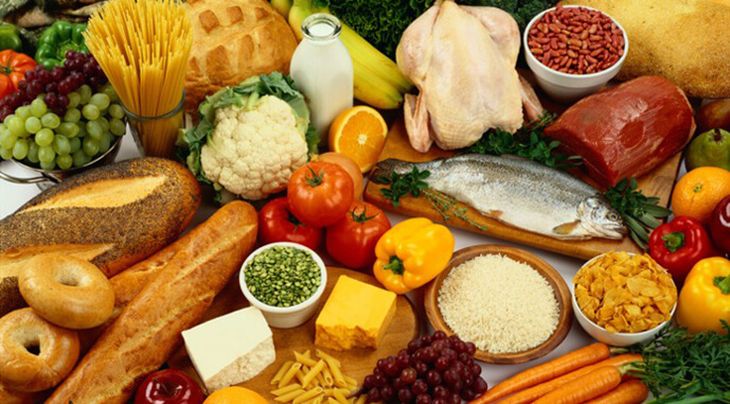Strong US dollar, high interest rates take toll on rural economies – CoBank

The combination of high interest rates and a strong US dollar is beginning to take a disproportionate toll on rural industries like agriculture, forest products, mining and manufacturing, according to a quarterly report from CoBank.
Most international transactions are still conducted in dollars, and a strong dollar makes US exports more expensive and imports cheaper. That disproportionally hurts the backbone of the rural economy, according to a new quarterly report from CoBank’s Knowledge Exchange.
While the US economy is outperforming expectations, the rest of the world—Europe and China in particular—has fallen short. As a result of the US economic position relative to other countries, the dollar has gotten much stronger than previously anticipated. The expectation that interest rates will remain high for the foreseeable future has also contributed to the strengthening dollar.
“The challenge for agriculture and other rural industries that rely heavily on global markets is their export partners simply can’t afford to buy U.S. products,” said Rob Fox, director of CoBank’s Knowledge Exchange. “When you combine the loss of exports with a general slowdown in the US economy, it’s a double whammy for many businesses operating in rural America.”
The disruptive geopolitical and economic events in recent years resulted in the historically irregular situation where commodity prices and the dollar were both moving upward in tandem. But those events are now fading as market drivers. The fundamental inverse relationship between the broad array of commodities and the dollar has largely returned.
Farm Bill negotiations will take a back seat while the House of Representatives attempts to select a new speaker and Congress works to pass its annual appropriations bills before the Continuing Resolution expires on Nov. 17. The most likely outcome is an agreement by year-end to extend the current Farm Bill by a few months or up to a year or more.
Historically low water levels on the Mississippi River are limiting grain movement heading into peak fall harvest season. Higher barge rates on the river are pressuring interior basis values for corn and soybeans. The combination of a strong US dollar and robust export competition from Brazil and Russia are creating major headwinds for the US grain and oilseed export program. Winter wheat planting is underway in the US with acreage expected to be down slightly as prices languish below expected breakeven costs of production.
Fertilizer prices continued to weaken in the third quarter. Anhydrous ammonia and potash prices fell 30% and 15%, respectively. Prices for natural gas, used as a both feedstock and production input, dropped by about 7%. The fall fertilizer application season should be reasonably normal for regions that are seeing an orderly harvest. While the outlook for the 2024-25 planting season is cloudy, less fertilizer usage is expected as acres shift from corn to soybeans.
Fuel ethanol production was very strong during the third quarter, averaging 16.1 billion gallons compared to 15.4 billion during the second quarter of 2023. A strong summer travel season and attractive fuel ethanol prices were the key demand drivers. Profitability was also favorable, exceeding 50 cents per gallon vs. 20 cents per gallon in the year ago period. Renewable diesel and other biofuel capacity continues to grow, having increased by 26% or 800 million gallons since January 2023.
Limited supplies of market-ready cattle suppressed beef availability throughout the third quarter. USDA estimates total US beef output will be down 5% in 2023 and expects an additional 7% decline in 2024. Tight supplies continued to churn the wholesale beef market. The composite boxed beef cutout climbed to record highs in June and July, averaging a 16% premium year-over-year for the quarter. But with fed cattle prices up 30% compared to last year, packer margins came under pressure. Despite the rising price environment, consumer demand for beef has remained steadfast.
The US Supreme Court decision to uphold California’s Proposition 12 spurred a rally in the pork market. Pork cutout values increased 41% from May-July, countering weak prices earlier in the year. Hog prices also rallied, with nearby hog futures climbing 36% from late May through early August. With production rising and seasonal interest fading, markets have since cooled. USDA’s latest hogs and pigs report suggests that while the industry is making efficiency gains, production levels will continue to teeter on meager profit expectations.
Chicken markets were tepid at the beginning of the third quarter. Breast meat values were unseasonably low and wings hovered around $1 per pound. While elevated consumer price points may have contributed to soft disappearance, the burden of elevated surplus was difficult to offload. Severe margin compression combined with high input costs caused some producers to reconsider longer-term production goals. Any growth will be limited given the announcements of six plant closures this year.
Strong cheese production and slowing dairy exports combined to pull Class III milk prices down to a paltry $13.77 per cwt. by midsummer. With ample cheese and strong milk production, Midwest spot loads of Class III milk bottomed out much lower than the five-year average. Faced with low milk prices and high feed costs, dairy farmers sent more cows to slaughter to take advantage of record-high beef prices. Futures markets indicate that the final quarter of the year could be much better, with projected Class III milk prices at $17.30 per cwt. The biggest wild card for milk prices is China, the world’s leading dairy-product importer, which is facing an economic downturn.
Read also
Wheat in Southern Brazil Impacted by Dry Weather and Frosts
Oilseed Industry. Leaders and Strategies in the Times of a Great Change
Black Sea & Danube Region: Oilseed and Vegoil Markets Within Ongoing Transfor...
Serbia. The drought will cause extremely high losses for farmers this year
2023/24 Safrinha Corn in Brazil 91% Harvested
Write to us
Our manager will contact you soon



